It’s a frustrating moment when your car doesn’t respond the way you expect it to. And one of the most common issues is when the brake calipers don’t release properly. So, what causes brake calipers to not release?
There are several causes for brake calipers not releasing. The most common causes include a faulty brake fluid level, worn brake pads, a dirty brake fluid line, a leak in the brake system, or a problem with the caliper itself.
In this article, we’ll look at why brake calipers not releasing and potential fixes to get them working again. If you’re having issues with your brake calipers, it can help you understand the problem and figure out what to do.
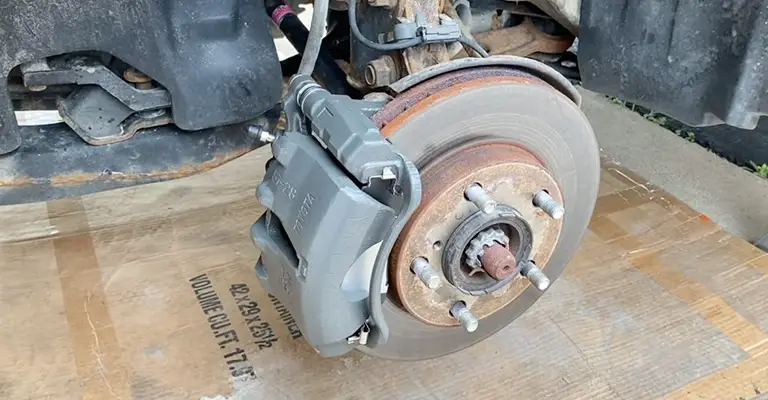
When Does a Brake Caliper Lock Up (Symptoms)?
The most obvious symptoms of a stuck brake caliper will be discussed before the root causes are revealed.
- When you put on the brakes, the car veer to one side.
- You’ll detect a grinding sound emanating from the wheels.
- The calipers will leak brake fluid.
- poor mileage per gallon.
- The wheels will emit smoke.
There are additional indications of a seized caliper beyond these. So, it’s best to figure out what’s causing the problems. The causes of a brake caliper that won’t release are discussed in the following section.
Why Don’t the Brake Calipers Release?
Your brake calipers may become stuck for various reasons, and this section will outline the most frequent ones. Along with that, you’ll learn how to free the stuck calipers.
Brakes Could Freeze Up
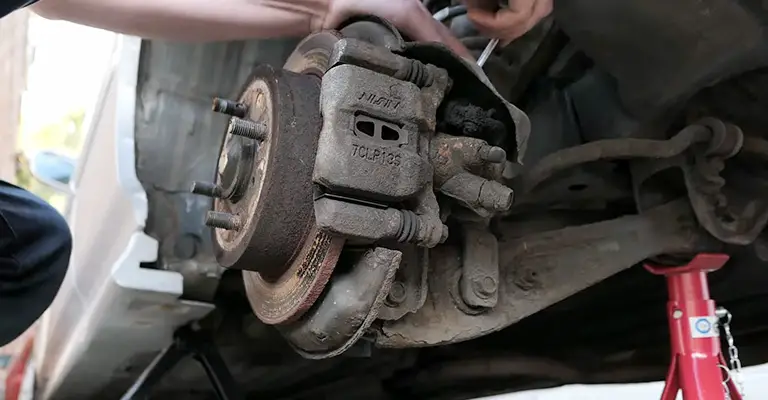
It is commonly believed that new calipers are necessary when the existing ones cannot be released. We don’t believe that to be the case, though.
Due to dryness, the slides of the brake calipers can freeze up, preventing the brakes from moving. In a nutshell, the inability of your brake calipers not to release is due to frozen front brakes.
How to Fix: Frozen-Up Brakes
It is easy to fix this by greasing the pistons in the brake calipers. All that needs to be done is minimal disassembly of the brake caliper assembly, followed by a thorough cleaning with brake cleaner spray.
A bit of bronze wool can help you tidy things up, too. To finish, re-lubricate the brake slides with high-temp copper grease. Lubricating the brake calipers can also be done with a grease gun.
Take the bleeder fitting off, attach the grease gun, and start pumping. This approach could have drawbacks, particularly if you own an old car. If your brake calipers have become stuck, this tutorial will show you how to unfreeze them.
Seized Brake Calipers
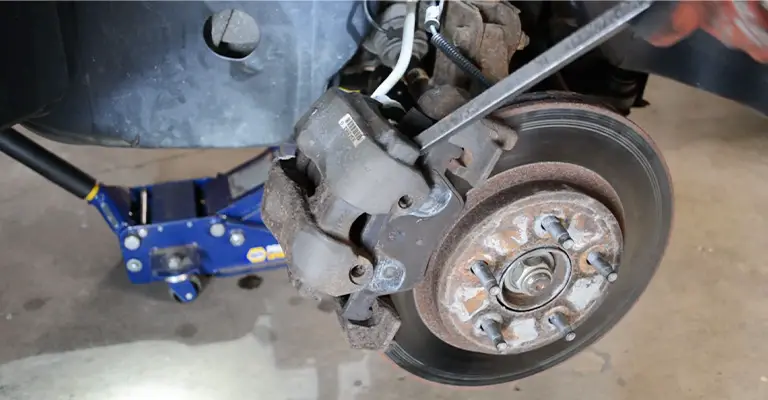
A seized caliper or brake pad is the most common cause of brake calipers failing to release. Jammed brake calipers are typically caused by neglecting to lubricate the pistons within the calipers.
The brake calipers in your vehicle are built to last, even in extreme heat or cold. And the pistons deteriorate with age due to the effects of this constant change. So, moisture can easily enter your caliper and erode the pistons, causing them to seize.
How to Fix: Seized Brake Calipers
When the brake calipers are seized, the only option is to replace them. How can we tell if the brake calipers are jammed and need to change them? When the brake calipers become stuck, they will pull to one side when you apply heavy brakes.
Replacement of the brake calipers will cost you between $600-$900. DIY caliper installation will reduce the price from $150-$200. If you’re not confident in your mechanical abilities, it’s best to take your vehicle to a pro.
Check out the YouTube video: How to replace brake calipers.
Frayed Brake Hose
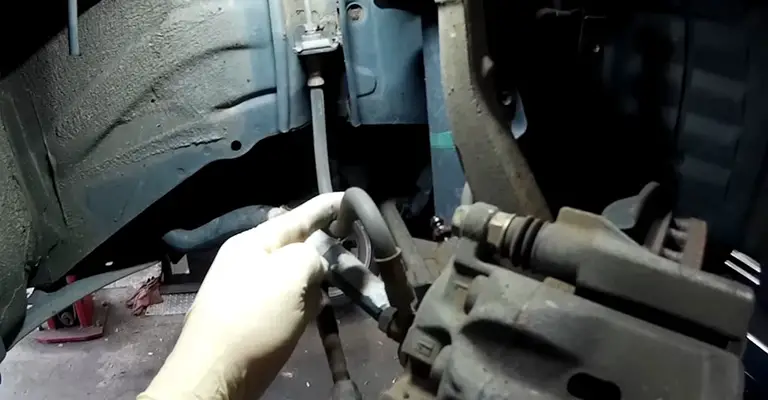
The sticking of the brake calipers can also be attributed to a worn brake hose. When a brake hose degrades or is damaged internally, a chunk of rubber can split and hang loosely inside the hose.
The rubber hunk might serve as a safety mechanism. As a result, the pads will firmly grip the rotors when you press the brakes.
When the brake is released, however, the mass of the rubber hinders the hydrostatic pressure from releasing the caliper pistons. So long as the brake calipers are not released, the brakes will remain engaged.
How to Fix: Frayed Brake Hose
If the brake hose is worn out, you must replace it. Checking the brake hose should solve the problem. Try turning the wheels by hand and pumping the brakes several times. Keep pumping the brake pedal if you’re having trouble spinning the tires.
Get the bleeders out now. Know that leaking brake fluid indicates a problem with the brake hoses. If you have no idea how to change a car’s brake hose, check the YouTube tutorial video.
YouTube Link: How to Replace Brake Hose
Misalignment of the Calipers
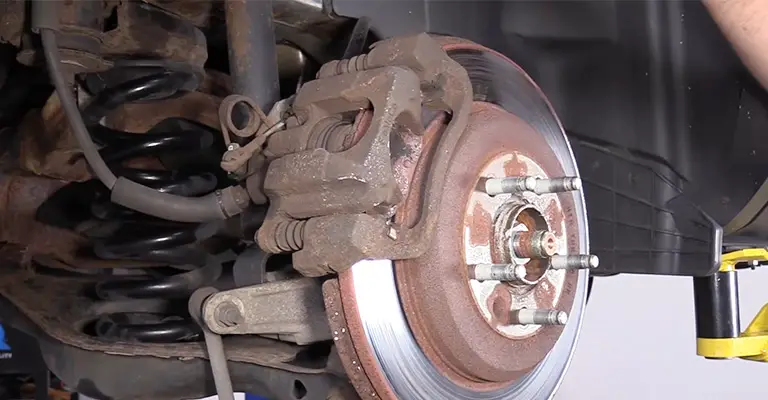
Any problems with the brake drag or the front brake caliper can be avoided by ensuring the caliper is properly aligned with the rotor. Time and use can cause calipers to become misaligned.
In the worst-case scenario, the brake calipers might not separate from the rotor surface. Therefore, the rotors and calipers will stick together due to overheating. Misalignment of a caliper can occur for many reasons.
The calipers’ mounting brackets are susceptible to bending, even from a relatively minor impact. According to research, brake pads and calipers can become warped from overheating, which can then cause the calipers to become misaligned.
How to Fix: Misalignment of the Calipers
We advise you to take your car to a professional auto mechanic so that the misalignment of the brake calipers can be corrected.
Caliper misalignment is a common brake system issue that can be spotted during a visual inspection by a professional. Then they’ll assist you in re-centering the calipers for optimal results.
Faulty Master Cylinder
Sticking brakes may be the result of a faulty master cylinder. It’s caused by brake fluids that are too dirty to work properly. A blocked compensatory port inside the master cylinder is usually to blame when the brake calipers become stuck.
Blocking this port prevents the disc brake fluid from recirculating toward the master cylinder. So, your brakes or calipers will become jammed. The master cylinder may also fail completely, which would be a much more drastic outcome.
How to Fix: Faulty Master Cylinder
Removing excess brake fluid in the master cylinder is as easy as bleeding the system. The video below will teach you how to bleed a master cylinder if you have never done so before. If that doesn’t work, you need a new master cylinder.
YouTube Link: How to Bleed Master Cylinder
FAQs
What Causes Brakes to Drag?
Brakes are usually drugged because of weak or broken drum brake springs. But brake dragging can also be caused by a clogged caliper piston or frozen emergency brake cables.
Can Brakes Stick Because of a Master Cylinder?
Yes, brakes may become stuck if the master cylinder fails. Sticking brakes can be caused by a malfunctioning master cylinder that locks the system in the “on” position.
Can a Caliper Unfreeze Itself?
Contrary to popular belief, a caliper cannot unfreeze itself. It is impossible to undo the effects of corrosion on freeze calipers. This bond can be broken with a hammer blow.
How Much Does a Seized Caliper Repair Cost?
Repairing a frozen caliper will set you back at least $600 and as much as $1,000. Obtaining the necessary components will cost you $450-$750. The price of labor is estimated to be between $150-$250.
Can a Seized Caliper Be Used to Drive?
No, you shouldn’t operate a vehicle while a caliper is seized. Brake discs can be severely damaged if you continue driving with a seized caliper.
Final Thoughts
The brake calipers are a critical component of a vehicle, helping to slow the wheels by pressing a brake pad against the rotor. However, what causes brake calipers to not release? The fixes are simple.
Our advice is that you check the pistons for wear and lubricate them. Pistons are an integral part of the caliper, so if they crack, the whole thing needs to be replaced.
Additionally, we recommend servicing the master cylinder and lubricating the brakes. Following these guidelines will ensure that your front brake calipers last as long as possible.
Leave a Reply